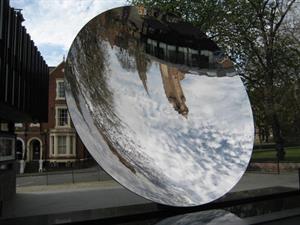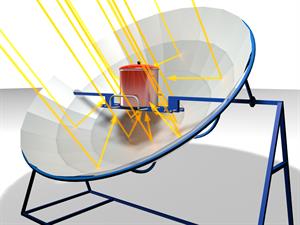PDF chapter test TRY NOW
A curved mirror whose cross-section is shaped like the tip of a parabola is known as a parabolic mirror. It has a concave reflecting surface (curved inward), which directs all the incident beams of light to converge at its focal point.

In this mirror, light rays produced by the source focused at the focal point will fall on the mirror's surface, and they will diverge in a direction, which is parallel to the principal axis of the parabolic mirror.

Hence, it reflects the light rays to travel a long distance without getting diminished.
Parabolic mirrors are also known as parabolic reflectors, used to collect or project light energy, heat energy, sound energy and radio waves.
Applications:
They are used in,
- Reflecting telescopes
- Radio telescopes
- Parabolic microphones
- Solar cookers and
- Solar water heaters, etc.,

History:
The principle of parabolic reflectors has been known since Greco-Roman times.
- Mathematician Diocles described and proved that parabolic reflectors focus a parallel beam to a point in his book "On Burning Mirrors".
- Parabolic mirrors were also examined by the physicist Ibn Sahl in the \(10\)th century. In his book Optica Promota (\(1663\)), James Gregory expressed that a reflecting telescope with a parabolic mirror would correct spherical aberration and the chromatic aberration seen in refracting telescopes.
- In 1888, the first parabolic mirrors were constructed by Heinrich Hertz, a German physicist, in the form of a reflector antenna.
Reference:
1. https://commons.wikimedia.org/wiki/File:Parabolic_Reflector_in_Nottingham_-_geograph.org.uk_-_1042997.jpg
